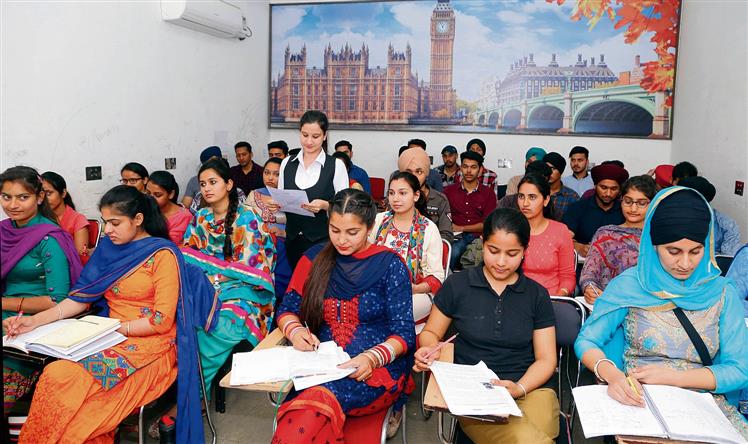
After the Canadian government doubled Guaranteed Investment Certificate (GIC) amount for international students from January 1, 2024, a majority of pupils preparing for IELTS in Patiala and Fatehgarh Sahib are now preferring Australia and New Zealand over Canada.
The move has triggered panic among immigration agents who said the multi-million dollar industry would be hit financially if Canada continues to remain tough with its policies.
Sanam Singh, a resident of Sanaur, said he had cancelled the plan to study in Canada and would now enroll for a programme in New Zealand. “I have some relatives in New Zealand. Even weather of this country is favourable for work,” said Sanam.
Palak from Patiala also shared similar views and said she would now opt for Australia. She said, “The GIC has been hiked from 10,000 Canadian dollars (Rs 6.14 lakh) to $20,635 (Rs 12.67 lakh) per applicant. If we include fee, the financial requirement has surged from Rs 16 lakh to Rs 25 lakh. In Australia, students don’t require the GIC.”
Avnish Jain, a Ludhiana-based consultant, said hike in the GIC amount would impact immigration industry. “This decision may lead to fall in number of students heading to Canada,” he said.
Amarjit Bhullar, economist and former professor, University of Northern British Columbia, said, “Believing that the stern action has been taken due to the ongoing diplomatic row between India and Canada or involvement of a few Punjabi youngsters in illegal activities will be a great misconception.”
Bhullar said, “Punjabi students spend around Rs 68,000 crore on education each year alone. Last year, 1.36 lakh students migrated to Canada from Punjab. Now, only skilled professionals with considerable income would opt for Canada.”
A recent study by the Conference Board of Canada titled ‘The Leaky Bucket: A Study of Immigrant Retention Trends in Canada’, shows that onward migration has been on the rise since 1980s. It jumped in 2017 and 2019, which was 31 per cent higher than the historical average. The post-Covid numbers must be higher because the economic condition of Canadians has generally declined,” added Bhullar.
